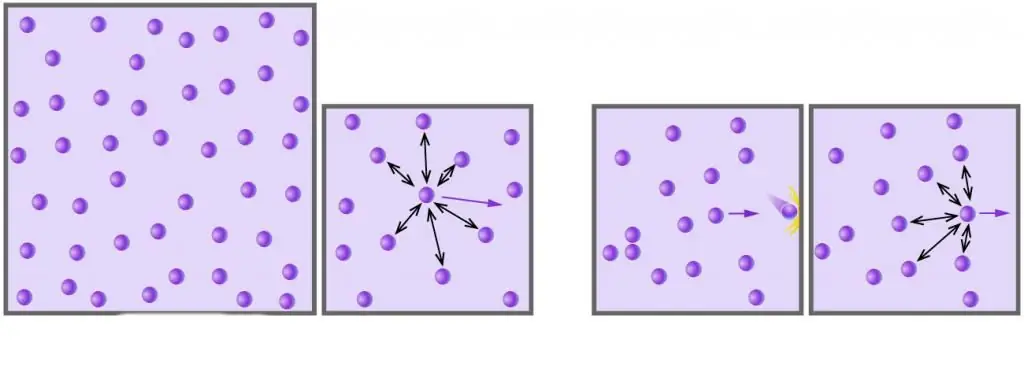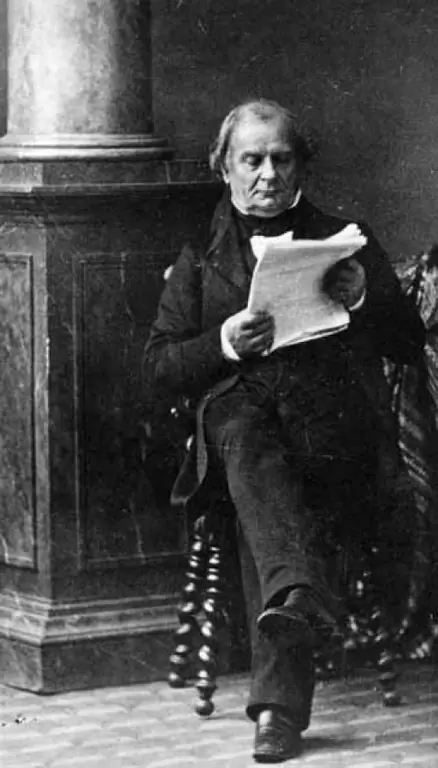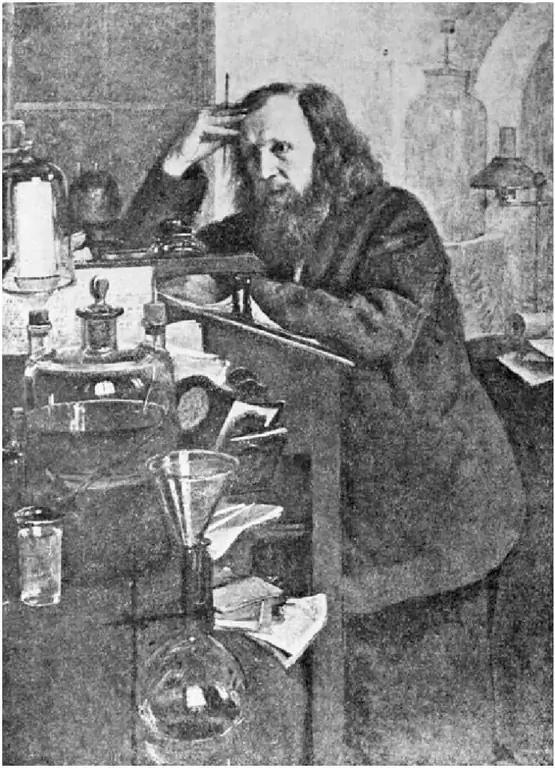Thermodynamics of the gaseous aggregate state of matter is an important branch of physics that studies thermodynamic equilibrium and quasi-static transitions in systems. The main model on which predictions of the behavior of systems are based is the ideal gas model. With its use, the Mendeleev-Clapeyron equation was obtained. Consider it in the article.
Ideal gas

As you know, all real gases consist of molecules or atoms, the distances between which are too large compared to their size at low pressures. In addition, at high temperatures, on an absolute scale, the kinetic energy of molecules exceeds their potential energy associated with weak dipole-dipole interactions (if, in addition to these interactions, there are other types of chemical bonds, for example, ionic or hydrogen, then they make a significant contribution to the potential component of the internal system energy).
Due toFor many real gases under conditions close to normal, one can neglect their internal interactions and particle sizes. These two main approximations make up the ideal gas model.
Mendeleev's equation in physics

It is more correct and fair to call this equation the Clapeyron-Mendeleev law. The fact is that it was first recorded by the French engineer Emile Clapeyron in 1834. He did this by analyzing the gas laws of Boyle-Mariotte, Gay-Lussac and Charles discovered by the beginning of the 19th century.
The merit of the Russian chemist Dmitry Mendeleev lies in the fact that he gave the equation a modern and easy-to-use mathematical form. In particular, Mendeleev introduced into the equation a constant for all gases R=8, 314 J/(molK). Clapeyron himself used a number of empirical constants that make the computational process difficult.
The Mendeleev-Clapeyron equation is written as follows:
PV=nRT.
This equality means that the product of pressure P and volume V on the left side of the expression is always proportional to the product of absolute temperature T and the amount of substance n on the left side.
The expression under study allows you to get any gas law if you fix two of its four parameters. In the case of isoprocesses, closed systems are studied in which there is no exchange of matter with the environment (n=const). These processes are characterized by a single fixed thermodynamic parameter (T, P or V).

Example problem
Now let's solve the problem on the Mendeleev-Clapeyron equation. It is known that oxygen weighing 500 grams is in a cylinder with a volume of 100 liters at a pressure of 2 atmospheres. What is the temperature in the balloon, given that the system is in thermodynamic equilibrium.
Recall that according to the definition, the amount of a substance is calculated by the formula:
n=m/M.
Where m is the mass of all particles of the system, M is their average molar mass. This equality allows us to rewrite the Mendeleev equation in the following form:
PV=mRT/M.
Where we get the working formula for this task:
T=PVM/(mR).
It remains to convert all quantities to SI units and substitute them into this expression:
T=21013250, 10, 032/(0, 58, 314)=156 K.
Calculated temperature is -117 oC. Although oxygen at this temperature is still gaseous (it condenses at -182.96 oC), under such conditions the ideal gas model can only be used to obtain a qualitative estimate of the calculated value.






